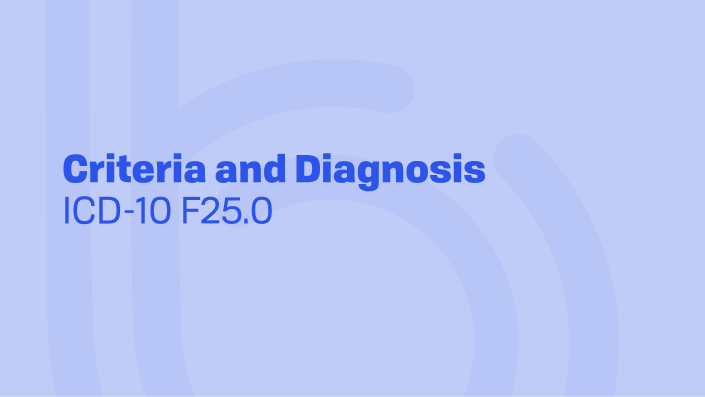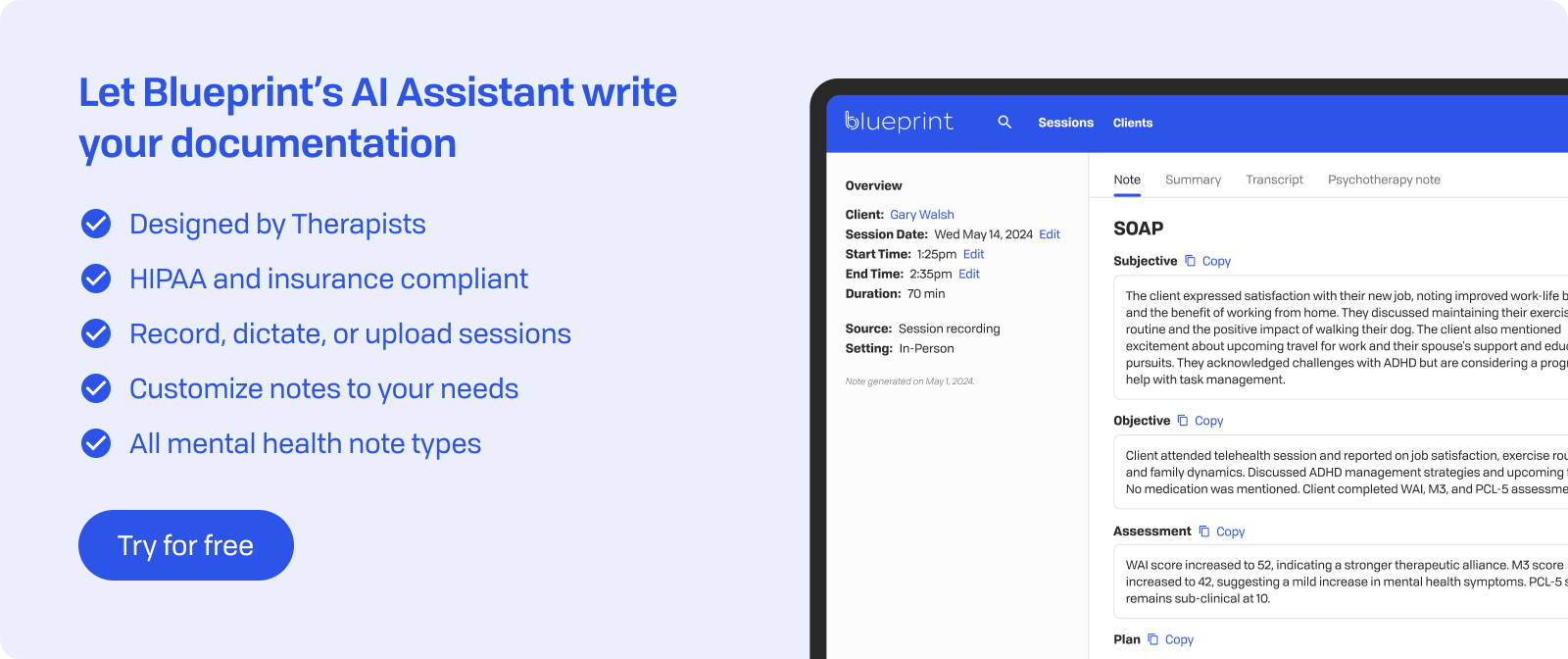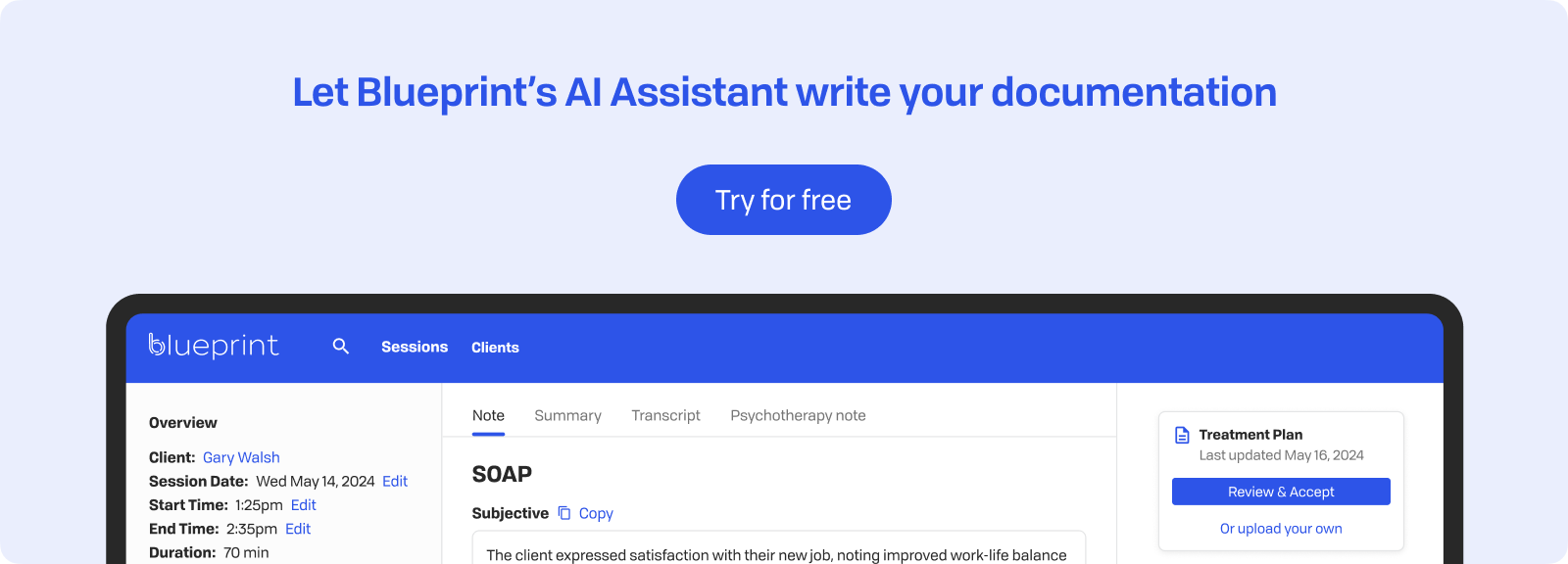
In Brief
When a client presents with both psychotic symptoms and mood episodes, the diagnostic process can become particularly complex. These cases often challenge our clinical assessment skills and require careful consideration of multiple diagnostic possibilities. The intersection of psychosis and mood symptoms represents one of the most intricate areas in mental health diagnosis.
Schizoaffective disorder, bipolar type, occupies a unique space in our diagnostic framework. Differentiating between Schizoaffective disorder, bipolar type, and other diagnoses, such as Bipolar I disorder with psychotic features, is one of the most clinically challenging diagnostic distinctions, given overlapping symptom profiles, fluctuating mood and psychotic presentations, and the significant implications for treatment planning and prognosis. Understanding this diagnosis is crucial for accurate assessment and effective treatment planning.
Properly identifying and coding this condition impacts everything from treatment approaches to insurance reimbursement. Getting the diagnosis right matters not just for clinical accuracy but for ensuring clients receive appropriate care. Let's examine what makes this diagnosis distinct and how to properly classify it.
ICD-10 Classification: Code F25.0, Schizoaffective Disorder, Bipolar Type
The ICD-10 code F25.0 refers to the diagnosis of schizoaffective disorder, bipolar type. This classification represents a distinct diagnostic entity that combines psychotic and mood features.
Schizoaffective disorder requires the presence of a major mood episode concurrent with schizophrenia, criterion A symptoms. Additionally, delusions or hallucinations must occur for at least two weeks without prominent mood symptoms. This temporal relationship distinguishes it from other psychotic and mood disorders.
Differentiating schizoaffective disorder, bipolar type (F25.0) from schizophrenia (F20) involves identifying the presence of significant mood episodes that meet full criteria. Unlike schizophrenia, mood symptoms in schizoaffective disorder are prominent and present for the majority of the illness course. The bipolar type specifically requires at least one manic or mixed episode, with or without depressive episodes, during the illness course.
When distinguishing from bipolar disorder with psychotic features (F31), timing becomes crucial. In bipolar disorder, psychotic symptoms only occur during mood episodes. Schizoaffective disorder requires psychotic symptoms to persist when mood symptoms have substantially improved or remitted.
The diagnosis also differs from major depressive disorder with psychotic features. While both involve mood and psychotic symptoms, schizoaffective disorder requires psychotic symptoms independent of mood episodes. This key distinction affects both treatment planning and long-term prognosis.

Diagnostic Criteria and Clinical Features
Schizoaffective disorder, bipolar type, involves a mix of psychotic features and mood disturbances, leading to a complex clinical presentation. Clients must meet specific criteria to differentiate this disorder from other psychotic and mood conditions.
Psychotic symptoms must include at least two of the following:
- Delusions: Fixed false beliefs that remain despite evidence to the contrary
- Hallucinations: Sensory experiences without external stimuli, most commonly auditory
- Disorganized speech: Communication may show derailment, tangentiality, or incoherence
- Grossly disorganized behavior: Includes unpredictable agitation or motor immobility
The diagnosis of schizoaffective disorder, bipolar type, requires at least one manic episode during the illness, marked by elevated or irritable mood, increased energy, decreased need for sleep, grandiosity, and impaired judgment lasting at least one week.
To meet diagnostic criteria, psychotic symptoms must also meet duration requirements: Unlike schizophrenia or bipolar I disorder with psychotic features, this combination of concurrent and independent psychotic and mood symptoms defines schizoaffective disorder.
- Psychotic symptoms must appear for at least two weeks without significant mood symptoms
- Mood symptoms must persist for the majority of the total illness duration
- Diagnosis needs at least two distinct psychotic episodes
Challenges in diagnosis often involve distinguishing between primary psychotic disorders with secondary mood symptoms and primary mood disorders with psychotic features. Understanding the timing of symptoms requires careful assessment over time and input from family members.
Substance use often complicates the diagnostic picture, as intoxication or withdrawal can mimic both psychotic and mood symptoms. Medical conditions affecting the central nervous system must also be excluded through appropriate testing.

Assessment and Evaluation Strategies
Diagnosing schizoaffective disorder, bipolar type requires a systematic approach to capture the complex relationship between psychotic and mood symptoms. A comprehensive psychiatric evaluation serves as the basis for this diagnostic process.
The initial evaluation should include:
- Detailed symptom timeline: Record frequency, intensity, onset, and duration of both mood and psychotic symptoms, noting periods of overlap and times when psychosis occurred in the absence of mood symptoms.
- Psychiatric treatment history: Review previous diagnoses, medications, and treatment responses
- Mood episode assessment: Identify whether the individual has experienced a manic episode (required for the bipolar type), as well as any depressive episodes, documenting full DSM‑5 criteria.
Psychotic feature evaluation: Clarify the nature of delusions, hallucinations, disorganized thought, and negative symptoms, and their relation to mood changes. - Functional impact: Assess occupational, social, and self‑care functioning across the illness course.
- Collateral information: Gather reports from family, caregivers, or prior providers to confirm symptom history and rule out recall bias.
- Rule‑outs: Exclude other medical, neurological, or substance‑induced causes that could account for mood or psychotic symptoms.
- Substance use assessment: Screen for current and past substance use that may complicate the clinical picture
- Risk assessment: Evaluate suicide risk, particularly during depressive phases, and potential for aggression or high risk behaviors during manic episodes
Standardized assessment tools improve diagnostic accuracy and track symptom severity over time. Consider using:
- Positive and Negative Syndrome Scale (PANSS): Measures psychotic symptom severity
- Altman Self Reporting Mania Scale (ASRM): Quantifies manic symptoms
- Brief Psychiatric Rating Scale (BPRS): Provides overall psychiatric symptom assessment
- Mood Disorder Questionnaire (MDQ): Screens for bipolar spectrum disorders
Collateral information is invaluable when distinguishing schizoaffective disorder from other conditions. Family members and close contacts can provide important details about symptom timing, functional decline, and periods of remission that clients may not accurately recall. Their observations help clarify whether psychotic symptoms persist during euthymic periods—a key diagnostic criterion.
Documentation should clearly outline the temporal relationship between mood and psychotic symptoms, as this distinction directly impacts the ICD-10 F25.0 diagnosis and subsequent treatment planning.

Treatment Approaches
Managing schizoaffective disorder, bipolar type requires a comprehensive treatment strategy that addresses both psychotic and mood symptoms. The complexity of this condition often calls for a combined approach that includes medication management and psychosocial interventions.
Pharmacological interventions are a key part of treatment and include medications that target psychosis and mood symptoms.
Psychotherapeutic modalities can support a variety of socioemotional challenges commonly experienced by individuals with schizoaffective disorder, including interpersonal strain, medication treatment compliance, stress management, and self-esteem. Approaches that have shown success with this population include:
- Cognitive behavioral therapy (CBT): Assists clients in recognizing early warning signs, developing coping strategies, and challenging delusional thinking patterns.
- Psychoeducation: Educates clients and families about the illness, the importance of taking medication as prescribed, and ways to prevent relapse.
- Skills training: Aims to improve social skills, problem-solving, and daily living activities, enhancing functional outcomes.
Multidisciplinary team involvement enhances treatment outcomes. Psychiatrists handle complex medication regimens while therapists provide ongoing psychosocial support. Case managers coordinate services and ensure continuity of care. Peer support specialists offer unique insights from their own experiences. Family involvement is key for monitoring symptoms and supporting adherence to treatment.
Treatment plans should remain adaptable, with interventions adjusted based on which symptoms are most prominent and how the client responds. Regular team communication ensures coordinated care across all treatment areas.
Documentation and Coding Best Practices
Accurate documentation of schizoaffective disorder, bipolar type, demands careful attention to ICD-10 coding standards and clinical detail. The F25.0 code specifically captures this diagnosis, but proper documentation involves more than just listing the code.
Key documentation elements for F25.0:
- Temporal relationship: Clearly note when psychotic symptoms occur in relation to mood episodes
- Symptom specificity: Record specific psychotic symptoms (delusions, hallucinations) and manic episodes
- Duration criteria: Mention the two-week period of psychotic symptoms without prominent mood symptoms
- Current status: Indicate if the client is in an acute episode, partial remission, or full remission
Common documentation pitfalls include:
- Insufficient detail: Writing "psychotic symptoms present" without specifying type, frequency, or impact
- Unclear timeline: Not documenting whether psychotic symptoms persist outside mood episodes
- Missing severity indicators: Failing to document functional impairment or treatment response
- Inconsistent terminology: Using "bipolar with psychosis" when schizoaffective disorder is the accurate diagnosis
Insurance and billing considerations:
- Primary diagnosis placement: F25.0 should be listed as primary when it's the focus of treatment
- Supporting documentation: Include symptom checklists, rating scales, and treatment plans
- Medical necessity: Document how symptoms affect daily functioning and justify treatment frequency
- Progress notes: Regular updates showing symptom changes support continued treatment authorization
Proper coding ensures appropriate reimbursement and communicates the complexity of care required. Insurance reviewers look for clear documentation linking diagnosis to treatment interventions and measurable outcomes.

Ethical and Legal Considerations
Working with clients diagnosed with schizoaffective disorder, bipolar type, presents unique ethical and legal challenges that require careful navigation. The combination of psychotic symptoms and mood episodes can significantly affect decision-making capacity and treatment engagement.
Informed consent and capacity assessments become particularly challenging when psychotic symptoms or manic episodes affect judgment:
- Fluctuating capacity: Clients may have varying levels of decision-making ability depending on their current symptom state.
- Documentation requirements: Record specific observations about the client's understanding of treatment risks, benefits, and alternatives.
- Timing considerations: Schedule important treatment decisions during periods of stability when possible.
Confidentiality and disclosure issues require careful balance:
- Duty to warn: Psychotic symptoms or manic episodes may increase the risk of harm to self or others.
- Family involvement: Decide when sharing information with family members serves the client's best interests.
- Clear communication: Discuss confidentiality limits early in treatment, revisiting as symptoms fluctuate.
Navigating involuntary treatment scenarios often becomes necessary:
- Assessment criteria: Document specific behaviors indicating imminent danger rather than relying solely on diagnosis.
- Least restrictive environment: Consider intensive outpatient programs before inpatient hospitalization.
- Legal standards: Familiarize yourself with state-specific commitment laws and timeframes.
- Therapeutic relationship: Maintain rapport even during involuntary treatment to encourage future engagement.
The episodic nature of schizoaffective disorder means ethical considerations shift as symptoms change. Regular reassessment of capacity, safety, and treatment needs ensures both legal compliance and therapeutic effectiveness.
Key Takeaways
Understanding schizoaffective disorder, bipolar type (ICD-10 F25.0) involves recognizing its unique position where psychotic and mood symptoms overlap. The diagnosis relies on documenting psychotic symptoms that persist for at least two weeks without prominent mood symptoms, alongside the presence of manic episodes characteristic of bipolar disorder.
Clinical practice recommendations:
- Conduct thorough temporal mapping: Document when psychotic symptoms occur relative to mood episodes
- Use standardized assessments: Implement tools like PANSS and YMRS for objective symptom tracking
- Maintain detailed documentation: Specify symptom types, duration, and functional impact for accurate coding
- Coordinate multidisciplinary care: Integrate medication management with psychosocial interventions
- Address ethical considerations proactively: Regularly assess capacity and safety needs
Resources for continued learning and support:
- National Institute of Mental Health (NIMH): Comprehensive treatment information and helpline (1-866-615-6464)
- National Alliance on Mental Illness (NAMI): Family education programs and support groups (1-800-950-NAMI)
- Schizophrenia & Psychosis Action Alliance: Toolkits for newly diagnosed individuals
- American Psychiatric Association: SMI Adviser Tool for treatment planning
- Hearing Voices Network: Peer support for hallucination experiences
Regular consultation with colleagues experienced in treating schizoaffective disorder enhances diagnostic accuracy and treatment outcomes.

How Blueprint can help streamline your workflow
Blueprint is a HIPAA-compliant AI Assistant built with therapists, for the way therapists work. Trusted by over 50,000 clinicians, Blueprint automates progress notes, drafts smart treatment plans, and surfaces actionable insights before, during, and after every client session. That means saving about 5-10 hours each week — so you have more time to focus on what matters most to you.
Try your first five sessions of Blueprint for free. No credit card required, with a 60-day money-back guarantee.























